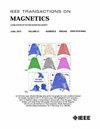Power Attack-Immune Spintronic-Based AES Hardware Accelerator for Secure and High-Performance PiM Architectures
IF 2.1
3区 工程技术
Q3 ENGINEERING, ELECTRICAL & ELECTRONIC
引用次数: 0
Abstract
Concerns about data security have grown due to the increasing leakage power attributed to the scaling of CMOS technology. This necessitates the integration of spintronic devices, such as magnetic tunnel junctions (MTJs), with CMOS to mitigate leakage power and maintain data integrity. This article proposes a novel hybrid MTJ/CMOS architecture that implements the advanced encryption standard (AES) algorithm within a process-in-memory (PiM) framework to enhance data security. The key innovation is the architecture’s resilience to side-channel attacks, including differential power analysis (DPA) and correlation power analysis (CPA). Comprehensive post-layout simulations using the well-established 40-nm CMOS technology demonstrate that the power consumption patterns of each AES component remain constant, even under process variations. Furthermore, system-level simulations highlight that the proposed AES-128 architecture effectively resists information leakage and power attacks, even when exposed to numerous power traces used for key extraction. Comparative results indicate that our proposed power attack-resilient AES-128 hardware design outperforms existing application-specific integrated circuit (ASIC) and field-programmable gate array (FPGA) implementations, enhancing static power by 98% and boosting maximum frequency by 72% and 91%, respectively. The architecture’s adaptability for implementing other AES versions (AES-192 and AES-256) and substitution-based encryption algorithms further expands its versatility.求助全文
约1分钟内获得全文
求助全文
来源期刊

IEEE Transactions on Magnetics
工程技术-工程:电子与电气
CiteScore
4.00
自引率
14.30%
发文量
565
审稿时长
4.1 months
期刊介绍:
Science and technology related to the basic physics and engineering of magnetism, magnetic materials, applied magnetics, magnetic devices, and magnetic data storage. The IEEE Transactions on Magnetics publishes scholarly articles of archival value as well as tutorial expositions and critical reviews of classical subjects and topics of current interest.
 求助内容:
求助内容: 应助结果提醒方式:
应助结果提醒方式:


